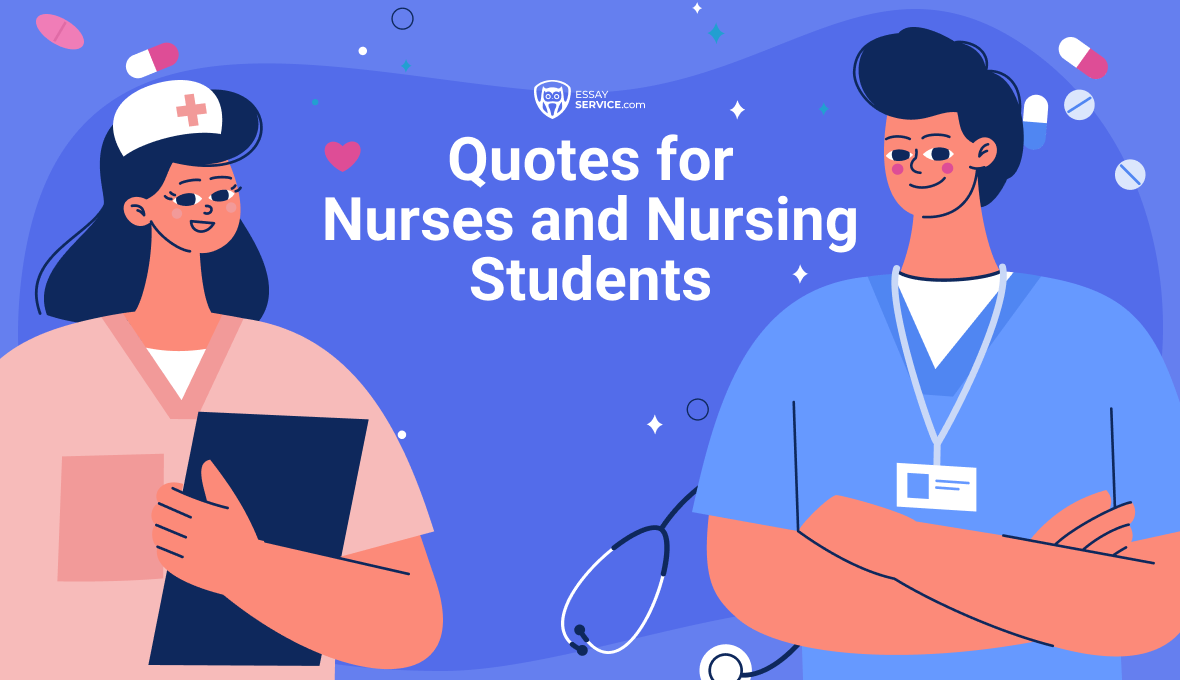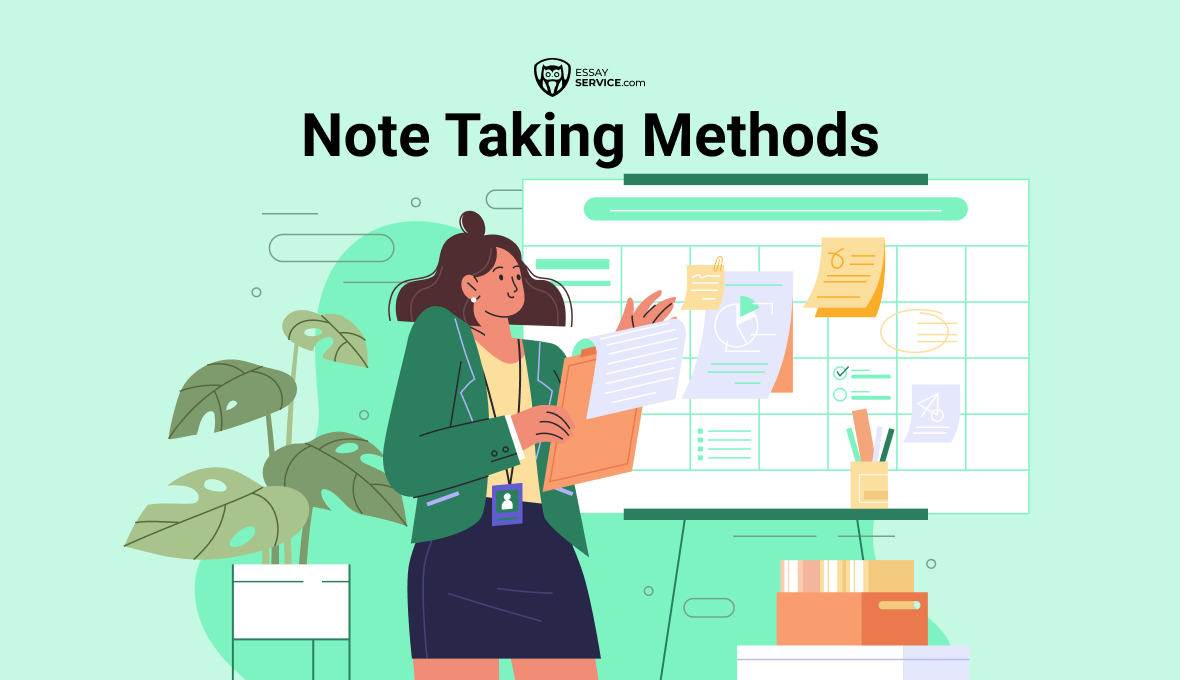
Note Taking Methods for Effective Learning
College note-taking is a must for every student, and how you tackle it can make a big difference in your academic journey. If your notes are all over the place, it can be a real hassle to sift through them when it's crunch time for tests and exams.
That's why our essay writing service presents 7 note taking methods for high school and college in this article. Not only will they help you grasp the material better, but they'll also turbocharge your study sessions, making it easier to remember what you've learned. Plus, they'll keep you on track and tidy, giving you the best shot at scoring those top marks!
What is Note Taking Methods?
Note-taking involves grasping information from written material or lectures and jotting it down, capturing key ideas, important points, or summaries. Researchers and students both agree that note-taking methods are powerful tools for enhancing learning. Studies consistently show that this process helps students attend lectures, understand the material, and recall it later.
Note taking methods for college offer two significant benefits: encoding and artifact. Encoding refers to the process of writing down information, which helps in understanding and remembering it better. The artifact concept suggests that notes become valuable resources during exam review sessions.
When considering how to take effective notes in college, it's essential to understand how they function:
- Firstly, the notes themselves serve as valuable resources during review sessions.
- Secondly, the act of taking notes actively engages your brain, leading to a deeper understanding of the material and improved retention.
So, we can say that adopting effective note taking methods is a wise choice for academic success.

7 Types of Note Taking Methods
There are different note taking methods and choosing the right one can be challenging, as it's not just about writing down everything you hear. In this section, we provide an overview of various types of note taking methods for college students, including how to use them effectively and situations when they are or aren't suitable.
#1 Note Taking Methods Outline
The outline method involves structuring notes hierarchically and organizing information into main topics, subtopics, and supporting details. Here's a brief overview of its pros and cons:
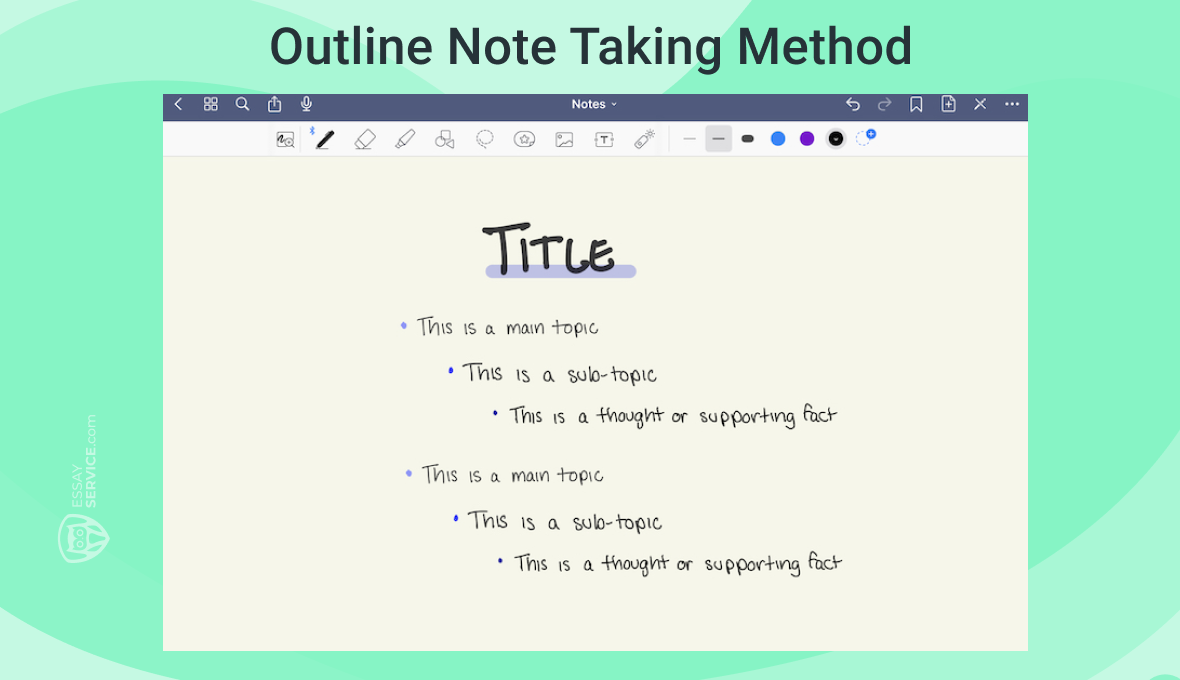
Pros:
- Helps in organizing information logically.
- Simplifies complex topics into manageable sections.
- Facilitates quick review and retrieval of key points.
- Encourages active engagement with the material.
Cons:
- May not be suitable for capturing detailed information.
- Requires good organizational skills to maintain coherence.
- May not accommodate visual learners who prefer more graphical representations.
Best Use:
- Ideal for structured lectures or presentations with clear main points and supporting details.
- Effective when organizing complex information or preparing for exams with broad topics.
#2 Cornell Note Taking Method
The Cornell Note Taking Method is a structured approach that divides a page into distinct sections: a note-taking area, a cue column, and a summary section. This method encourages active engagement with the material and provides a systematic way to organize and review notes.
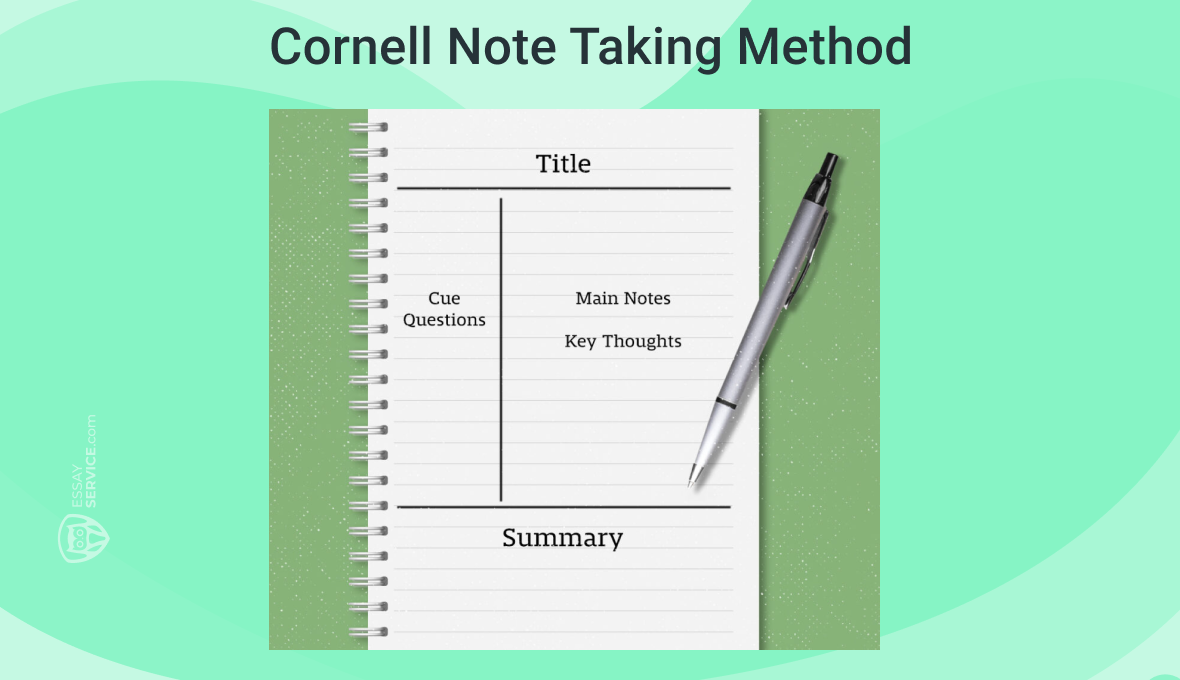
Pros:
- Promotes active listening and engagement during lectures.
- Facilitates organization by separating main ideas, cues, and summaries.
- Enhances retention and comprehension through the summarization process.
Cons:
- The initial setup may take time to master and adapt to.
- Requires consistent practice to fully utilize all sections effectively.
- May not be suitable for fast-paced lectures or discussions where note-taking time is limited.
Best Use:
- Well-suited for structured lectures or presentations where key points can be easily identified.
- Effective for subjects with a lot of factual information or key concepts that need to be memorized.
- Useful for students who benefit from systematic organization and review of their notes.
#3 Take Notes Infographic
Taking infographic notes involves using visual elements such as diagrams, charts, and symbols to represent information. This method transforms complex concepts into visually appealing and easy-to-understand graphics.
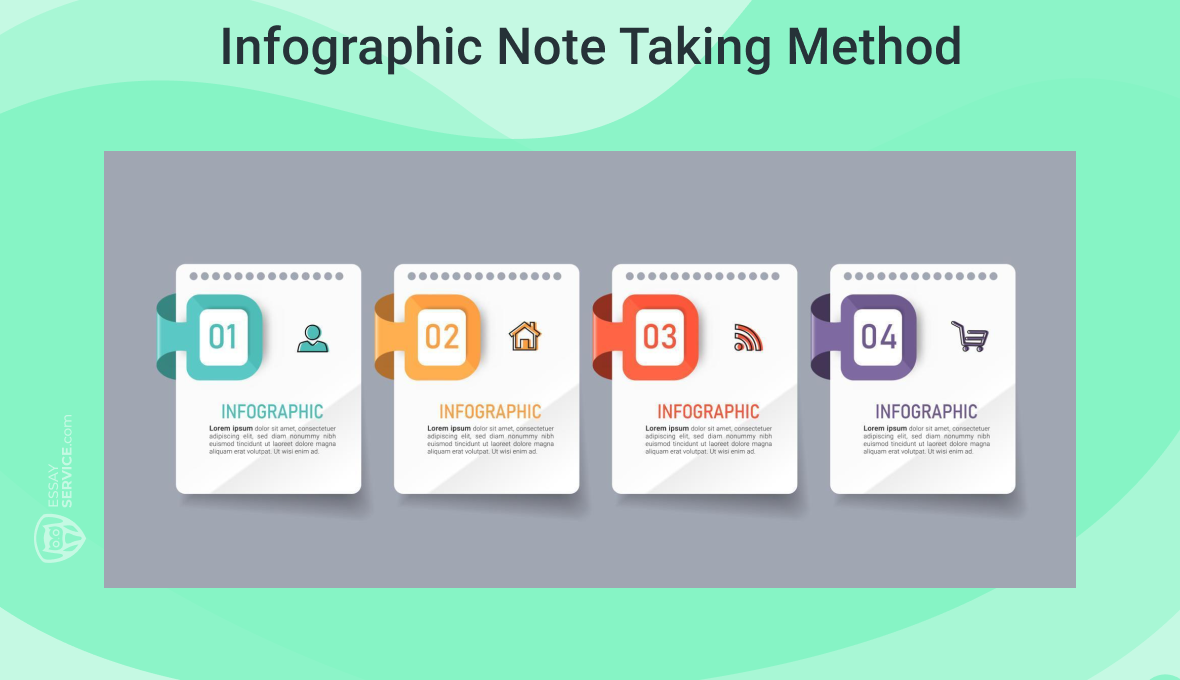
Pros:
- Enhances comprehension by presenting information in a visual format.
- Stimulates creativity and encourages innovative thinking.
- Facilitates quick review and recall of key concepts through visual cues.
Cons:
- Requires artistic skills or access to digital tools for creating visually appealing graphics.
- May not be suitable for capturing detailed or text-heavy information.
- Can be time-consuming to create intricate infographics, especially during live lectures.
Best Use:
- Ideal for subjects with complex relationships or processes that can be illustrated visually, such as biology or chemistry.
- Effective for learners who prefer visual learning styles and benefit from seeing information represented graphically.
#4 The Mapping Note Taking Methods
Mapping, especially mind mapping, is one of the most effective note taking methods for math. It involves creating visual representations of connections between ideas, concepts, and information. These maps can take various forms, including concept maps, mind maps, or flowcharts, and are used to illustrate relationships and hierarchies.
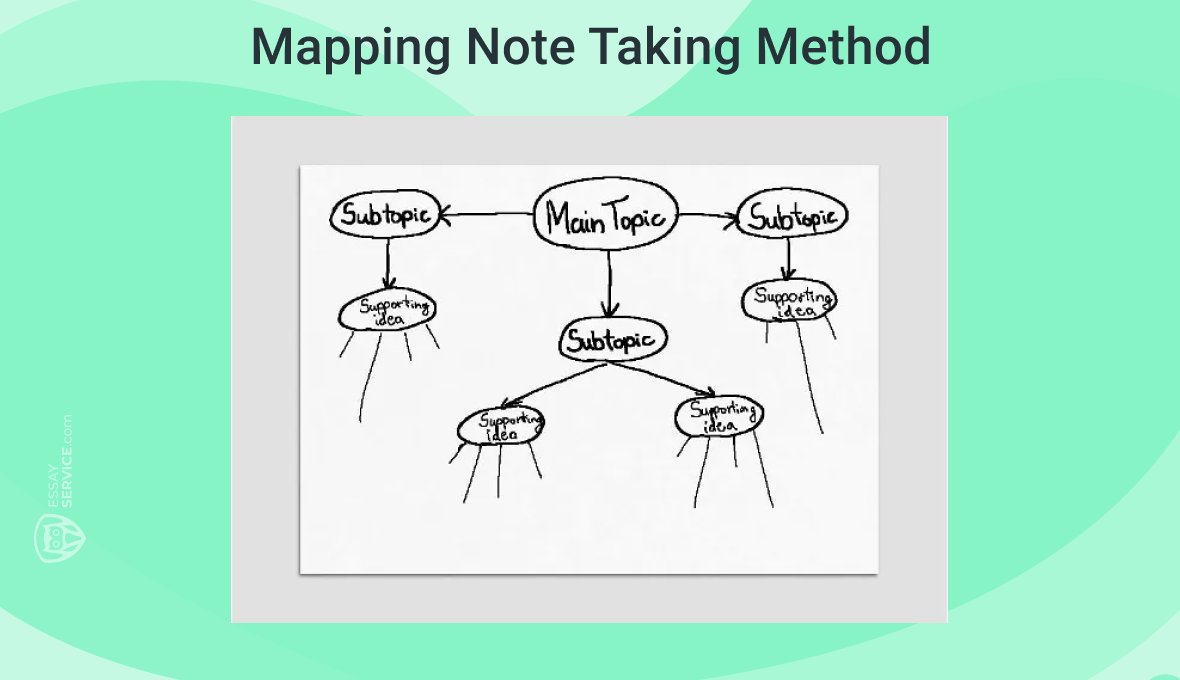
Pros:
- Promotes deep understanding of relationships between concepts.
- Facilitates memory retention by visualizing connections between concepts.
Cons:
- Requires time and effort to create detailed concept maps, especially for complex topics.
- May be challenging for students who struggle with visual representation or abstract thinking.
- Can become cluttered or overwhelming if not organized effectively.
Best Use:
- Ideal for subjects with interconnected concepts or interdisciplinary topics.
- Effective for brainstorming, organizing thoughts, and generating new ideas.
- Useful for reviewing and summarizing complex information in a visually engaging format.
#5 Charting Method of Note Taking
The charting method involves creating tables or grids to organize information systematically. It allows students to compare and contrast different concepts or categories, making it easier to identify patterns and relationships.
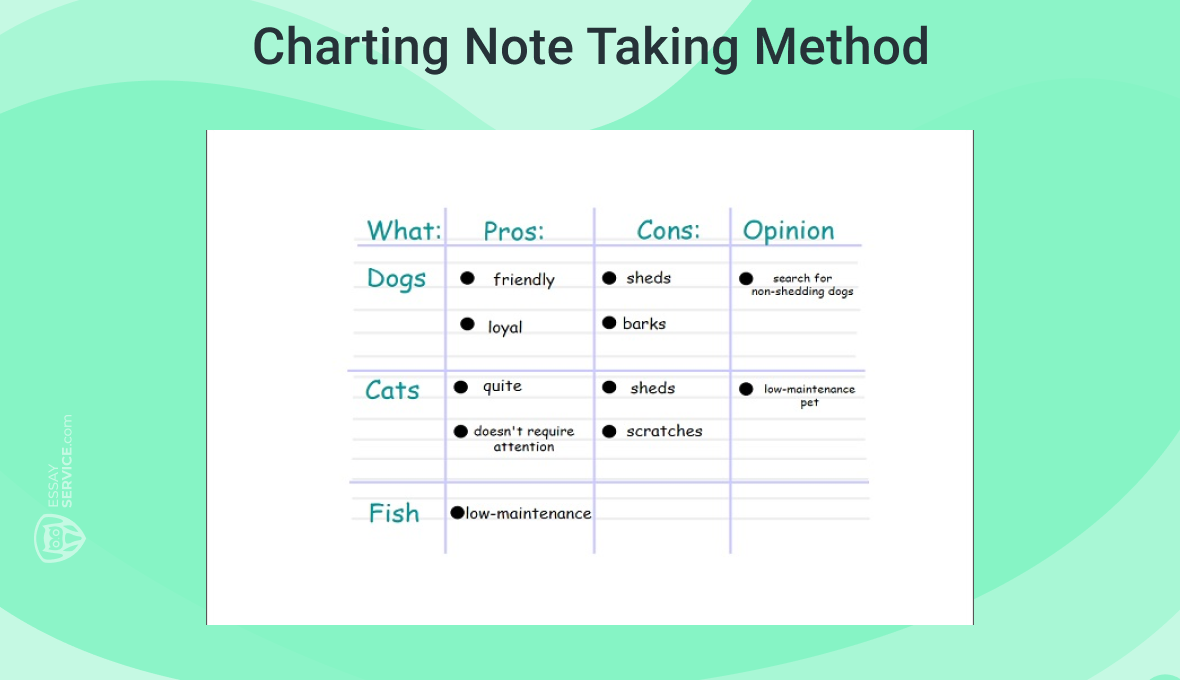
Pros:
- Promotes clear organization of information through tables or grids.
- Facilitates comparison and contrast of different topics or categories.
Cons:
- May not be suitable for capturing detailed or narrative information.
- Requires careful planning to determine appropriate categories and headings.
- Can become overly complex or cluttered if too much information is included.
Best Use:
- Ideal for subjects with structured content or data-driven topics, such as statistics or history.
- Effective for summarizing and synthesizing information from multiple sources into a concise format.
#6 Sentence Method of Note Taking
The sentence method involves jotting down key points and ideas using complete sentences. It provides a detailed and narrative approach to note-taking, capturing information in a structured and sequential manner.
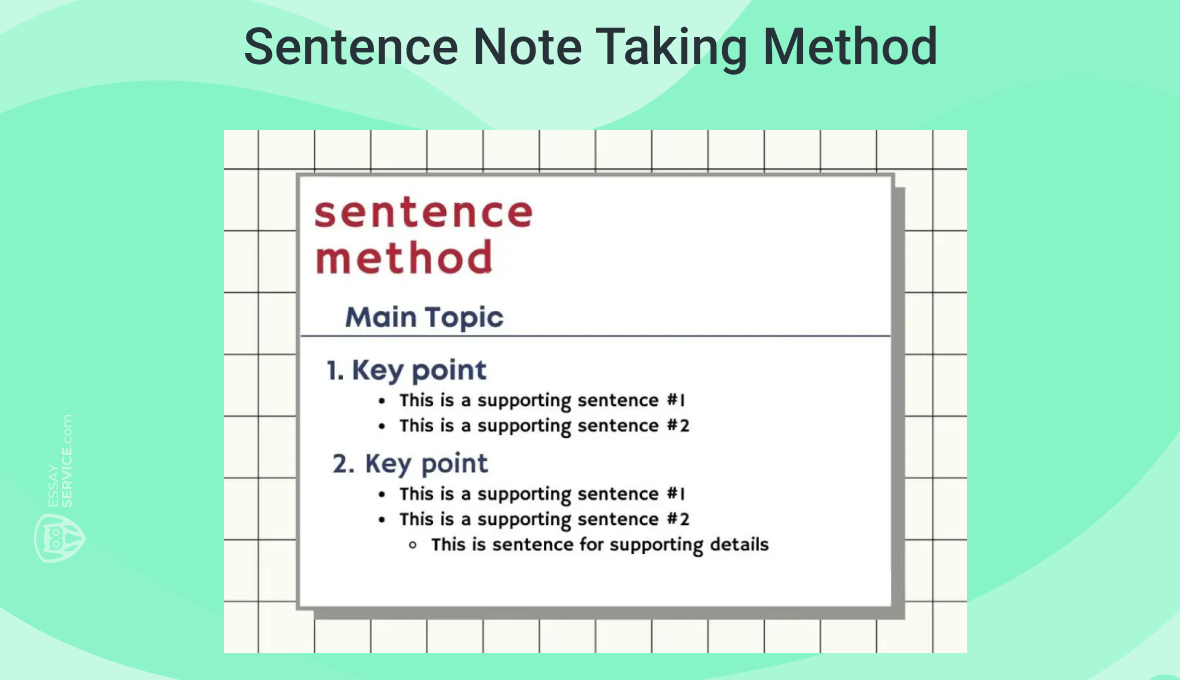
Pros:
- Allows for detailed and comprehensive note-taking, capturing both main ideas and supporting details.
- Facilitates understanding of complex topics by providing context and explanation.
- Enhances retention by summarizing information in complete sentences.
Cons:
- May be time-consuming during lectures or discussions with fast-paced delivery.
- Can result in lengthy notes that may be difficult to review quickly.
- Requires strong writing skills to effectively summarize information in complete sentences.
Best Use:
- Ideal for subjects with detailed or narrative-based content, such as literature or history.
- Effective for capturing lectures or presentations with sequential information or storytelling elements.
- Useful for students who prefer writing in full sentences and benefit from detailed explanations and examples.
#7 Digital Note Taking Methods
Digital note-taking involves using electronic devices and software to capture and organize information. It offers flexibility, accessibility, and a range of features that traditional note-taking methods may not provide.
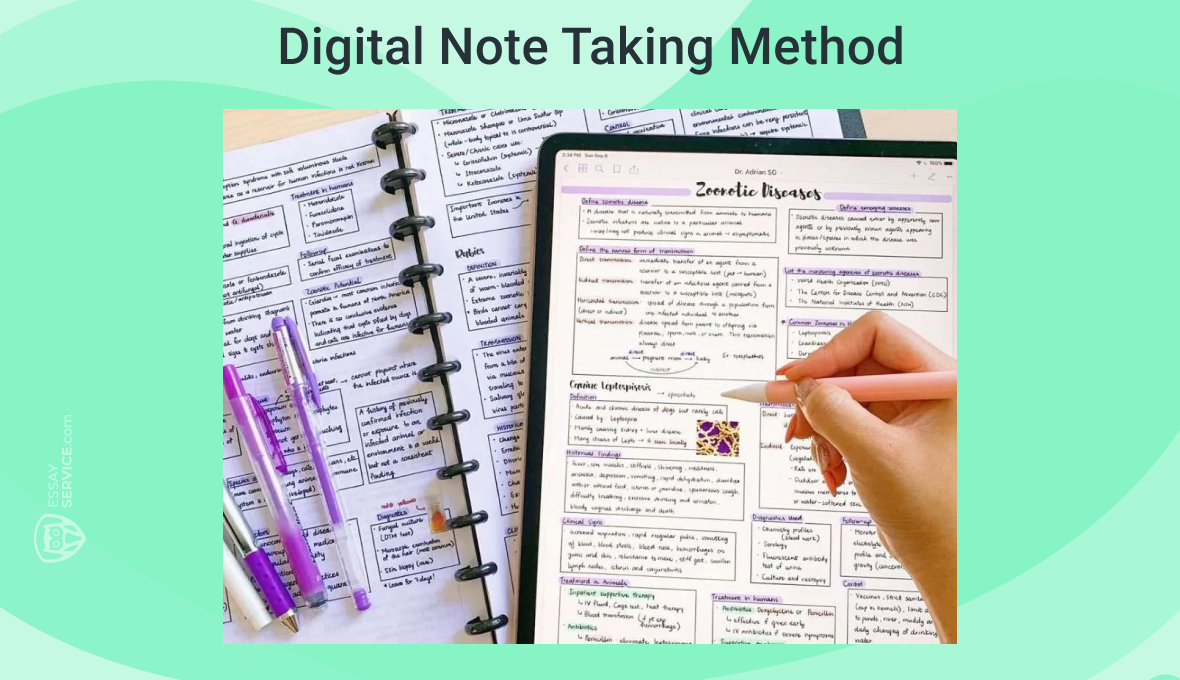
Pros:
- Enables easy organization and categorization of notes using folders, tags, or search functions.
- Facilitates collaboration and sharing of notes with classmates or colleagues.
- Allows for multimedia integration, including text, images, audio, and video.
Cons:
- May require technical proficiency and familiarity with digital tools and software.
- Risk of distraction from notifications, internet browsing, or other digital distractions.
- Dependence on electronic devices and potential issues with battery life or technical glitches.
Best Use:
- Ideal for tech-savvy students who are comfortable using electronic devices for note-taking.
- Effective for capturing multimedia-rich content, such as presentations or online lectures.
- Useful for collaborative projects or group study sessions, as notes can be easily shared and edited in real-time.
Digital or Handwritten Notes?
When it comes to note-taking, students often debate whether to go digital or stick with handwritten notes. Each method has its own advantages and disadvantages, and the choice ultimately depends on personal preference and learning style.
Digital Notes
Pros:
- Easy Organization: Folders, tags, and search functions for quick retrieval.
- Collaboration: Real-time sharing and feedback with classmates.
- Multimedia Integration: Text, images, audio, and video enhance notes.
Cons:
- Tech Proficiency: Challenging for some due to software knowledge.
- Distraction: Notifications and internet browsing divert focus.
- Tech Dependence: Risk of battery issues, glitches, or data loss.
Best Use:
- Tech-savvy students for lectures, presentations, or group work.
- Capturing multimedia-rich content effectively.
- Collaborative projects with real-time sharing and editing.
Handwritten Notes
Pros:
- Better Retention: Improves comprehension compared to typing.
- Flexibility: Doodles, sketches, and diagrams aid understanding.
- Reduced Distraction: Minimizes digital distractions for focus.
Cons:
- Organization Challenges: Requires extra effort for categorization.
- Limited Sharing: Difficult to share compared to digital notes.
- Review Difficulty: Messy or rushed handwriting may hinder review.
Best Use:
- Tactile learners who prefer handwriting for better retention.
- Subjects requiring visual learning or sketching.
- Personalized note-taking with drawings or symbols aiding understanding.
6 College Note Taking Tips
While the below can serve as effective note taking tips for high school, college note-taking can be trickier. You're expected to step up and exercise more initiative and discipline. So, if you're seeking helpful note taking tips for college, consider the following that will assist you in becoming more organized:
- Choose a seat near the teacher - Sitting closer to the teacher can help you focus better and catch important information easily. Plus, you'll be less distracted by what's happening around you.
- Write brief notes - Instead of copying everything word for word, jot down key points and main ideas. This saves time during class and makes reviewing your notes quicker.
- Create an organized method - Having a consistent way of organizing your notes, like using headings or bullet points, can make it easier to understand and study them later.
- Use short forms - Abbreviating common words or phrases can speed up your note-taking process. Just make sure your abbreviations are clear to you.
- Reflect as you write - Don't just transcribe what's being said. Try to understand the material as you write it down. This active engagement can help reinforce your understanding.
- Write by hand first, then type up later - Handwriting your notes during class helps you retain information better, but typing them up afterward makes them easier to organize and search through when studying. Plus, it gives you a chance to review and reinforce what you've learned.
Final Thoughts
As you start your college life, keep in mind the saying: 'A stitch in time saves nine.' Taking good notes now can save you lots of stress later. By using these tips, you're not only improving how you learn, but also building habits that will help you in the future. Stay organized, stay focused, and see each class as a chance to learn something new!
Frequently asked questions
Which Methods for Note-Taking Tend to Be Most Efficient?
Efficiency in note-taking often depends on personal preferences and the nature of the material being studied. Some find that summarizing key points in their own words helps them understand and retain information better. Others prefer using bullet points or creating visual aids like mind maps. The key is finding a method that works best for you and the type of content you're dealing with. Experimenting with different techniques can help you discover what helps you grasp and remember information most efficiently.
Which are the Best Note Taking Methods for Science?
In science, where concepts can be complex and interconnected, certain note-taking methods can be particularly effective.
- Outlining is useful for breaking down scientific topics into hierarchical structures, making it easier to see the relationships between different ideas.
- Diagrams are valuable tools for illustrating processes, relationships, and structures in subjects like biology or chemistry.
The Cornell Method, with its systematic approach of dividing the page into sections for main notes, cues, and summaries, can help science students organize and review information effectively.
How are the Cornell Format and Concept Mapping Different as Note-Taking Methods?
The Cornell Format and concept mapping are both popular note-taking methods, but they differ significantly in approach. The Cornell Format offers a structured layout, with sections for main notes, cues, and summaries, encouraging active engagement by prompting summarization and question formulation. In contrast, concept mapping is visual and nonlinear, involving diagrams to represent relationships between ideas. Concept maps illustrate connections within a topic or brainstorm ideas. While the Cornell Format is linear and systematic, concept mapping offers more creativity and flexibility in organization.
- add new FAQs;
- added new methods and descriptions for each;
- added new tips.
New posts to your inbox!
Your submission has been received!


